Kamatera Vs Digital Ocean?
In our 12 tests, Kamatera scored higher in 10 tests, and 2 test was tied. Kamatera delivered faster TTFB (22 ms), performed better in a longer stress test with unmatchable uptime (100%), and provided safety against DDoS, brute force attacks, and Trojans, while Digital Ocean had fewer resources, no security, reluctant support, and downtimes (12 minutes).
You can dive for more details.
Table of Contents
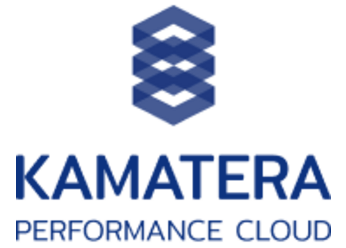
- CPU: 2.7GHz Intel Xeon
- TTFB: 22ms(NY)
- Speed: 548ms(SA)
- Uptime: 100%
- Strength: 328571(RC)
- Ease of Use: Clean Dashboard
- Hosting Resource: 1GB/20GB SSD/5TB
- Daily Backup: Yes
- Managed Service: Yes
- Security: Cloud Firewall & DDoS Protection
- Data Centers: 24
- Support: Live Chat, Phone & Email
- Pricing: From $4/m
Kamatera vs Digital Ocean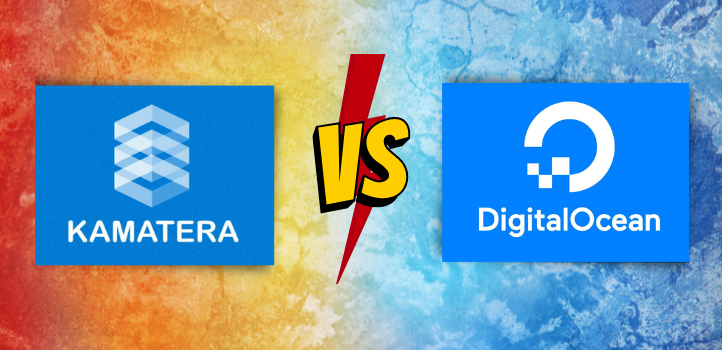
Round 1: TTFB – Which Responses First?
When a user tries to access your website, the time the server takes to process and send the first byte is called server response time (TTFB).
TTFB includes HTTP request time, DNS lookup, SSL activation, processing time, and first-byte sending time.
After that, FCP and LCP occur. So TTFB is the first indicator that tells you how your website will load faster or slower.
It’s a kind of boat engine. We tested both engines from 10 major locations.
| Location | Kamatera | DO |
|---|---|---|
| Frankfurt | 276ms | 398ms |
| Amsterdam | 238ms | 383ms |
| London | 216ms | 364ms |
| New York | 22ms | 131ms |
| Dallas | 133ms | 282ms |
| San Francisco | 222ms | 411ms |
| Singapore | 732ms | 884ms |
| Sydney | 645ms | 743ms |
| Tokyo | 484ms | 709ms |
| Bangalore | 721ms | 895ms |
Test Results
Winner – Comparatively, Kamatera has responded quicker than Digital Ocean.
Round -2 : Speed – Which one is faster?
After the Core Web Vitals update, speed is now a powerful ranking factor. Without it, your website can’t survive. It is now like oxygen.
Bear in mind, Core web vitals is not only a speed factor, it cares about how your website layout behaves(CLS) and how much server delay after the first input (FID).
Overall the three factors impact UX and Google get the three-factor scores from Users’ chrome.
According to the update, now above the fold content(LCP) should load under 2.5s. Under 0.1, CLS and under 100ms FID are admissible.
For testing CWV performance of both cloud hosts, we set up two WordPress websites on New York Servers. Kamatera’s entry plan was apt, but Digital Ocean’s entry-level plan ($4) does not allow us to install WordPress, so we chose the $6 plan.
Kamatera $4 Server Specification
Intel Xeon Platinum 2.7GHz with 49MB Cache
RAM -1 GB
SSD Disk – 20GB
Bandwidth – 5TB
CyberPanel 2.3
Ubuntu 20.04
Digital Ocean $6 Server Specification
DO-Regular Processor 2GHz with 4MB Cache
RAM-1 GB
SSD Disk -25GB
Bandwidth 1TB
Cyberpanel 2.3
Ubuntu 20.04
We used the famous GTmetrix and PageSpeed Insight tool in the test and got distinct results.
| Location | Kamatera | DO |
|---|---|---|
| Vancouver | 908ms | 1.1s |
| London | 851ms | 1.1s |
| San Antonio | 548ms | 1.1s |
Test Results
Winner – However, Digital ocean clears CWV, but they lose the speed battle against Kamatera.
Round 3: Uptime – Who lives longer
Not only speed but uptime is also another great factor in determining the performance and stability of a VPS.
Whether you are enjoying summer holidays at beaches or romantic movement with your partner, your website should be up all the time. If it goes offline often. Then It not only ruin your happy movement but also your revenue.
One thing should be noted some VPSs run smoothly on average traffic, but when traffic soars, they start to crumble.

Winner – In Our test, Kamatera rocked with 100% uptime while Digital Ocean went down two times for 12 minutes aggregately and they scored 99.945% for a month.
Round 4 : Strength – Which one loves challenges most
Any VPS can perform in the beginning. But what about while traffic spikes up?
Actually, how powerful is a VPS? It turns out through an unprecedented load. A VPS that smoothly delivers files, data and media despite an unusual burden is potent.
We tested their stress capacity. We sent 10k concurrent users to both sites for a minute. Kamatera rocked, but Digital Ocean measurably got stucked.
Even the test got aborted because after getting 2273 clients/second, they couldn’t handle the load anymore and got down for 8 minutes.
| Parameters | Kamatera | Digital Ocean |
|---|---|---|
| Response Time | ||
| Average | 876ms | 10150ms |
| Min | 11ms | 7223ms |
| Max | 7104ms | 10243ms |
| Response Counts | ||
| Success | 328571 | 20 |
| Timeout | 0 | 558 |
| Error Rate | 0% | 96.5% |
| Bandwidth | ||
| Sent | 36.15MB | 307.44KB |
| Received | 17.26GB | 1.07MB |
Test Result
Winner – It is crystal clear that Kamatera is a strong winner.
Round 5 : Ease of Use
Both provide a clean dashboard to manage your servers, enable backups, view usage of RAM, CPU, Bandwidth, Disk IOPS and snapshots.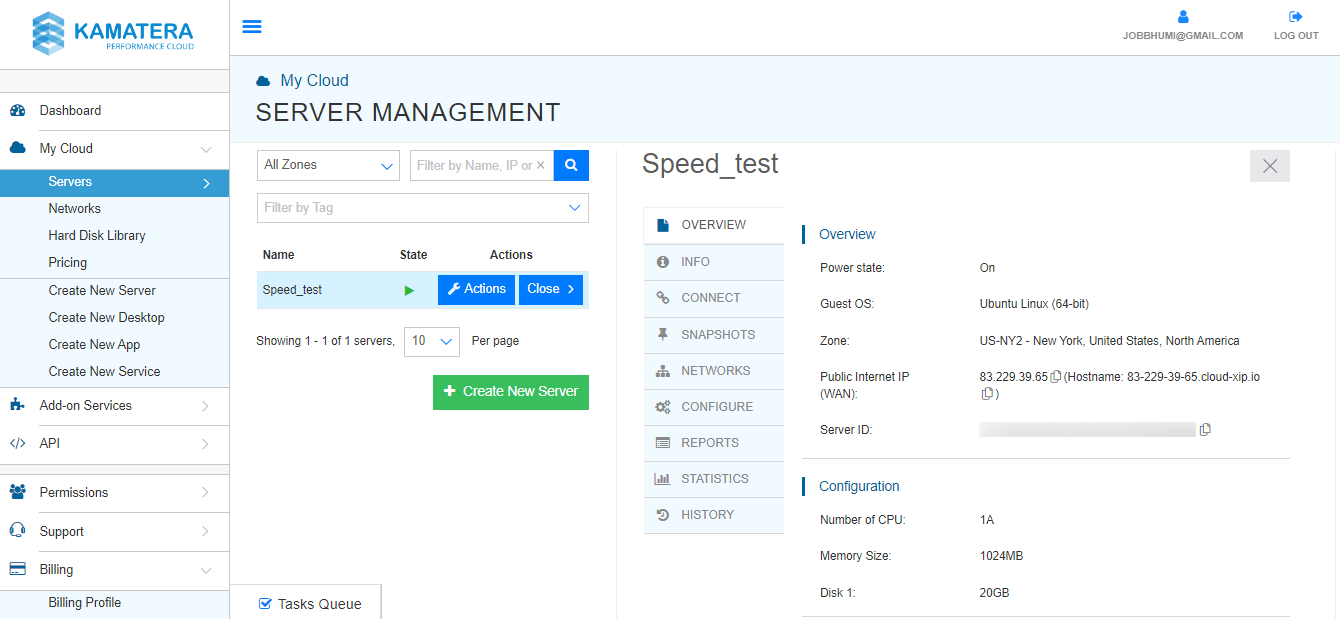
Both offer major 1-click apps like WordPress, Joomla, Nginx, Cyberpanel and Litespeed.
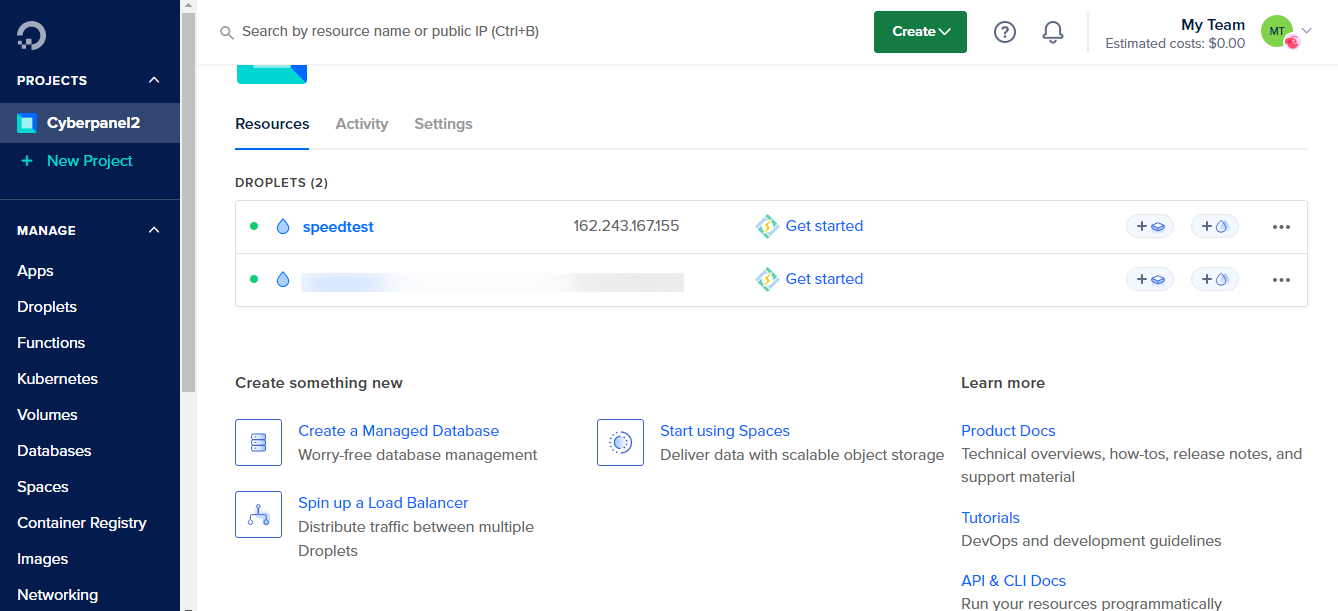 So beginners can readily sail their journey on both platforms.
So beginners can readily sail their journey on both platforms.
Winner – It’s a tie.
Round 6 :VPS Resource
Pricing is the same for their entry-level plans. But the number of resources is so different.
Kamatera provides a 2.7GHz+ Intel Xeon processor, 1 GB RAM, 20 GB SSD storage and huge 5000 GB bandwidth, 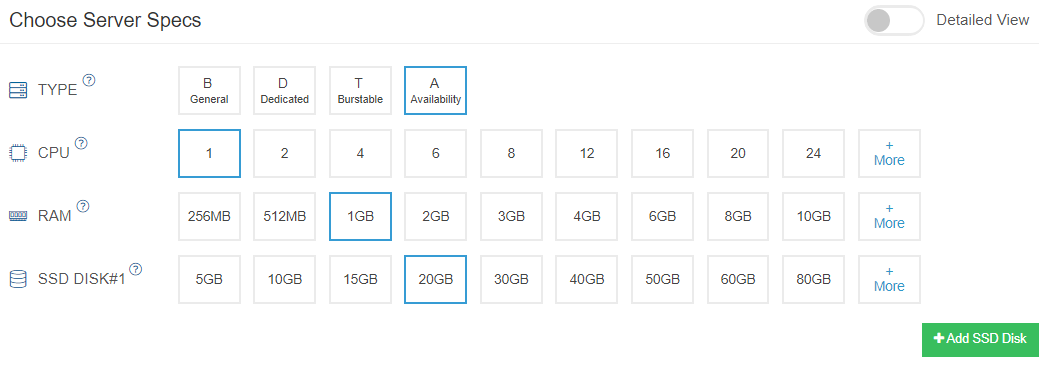 while Digital Ocean comes with 1 2GHz DO Regular processor, 512 MB RAM and 500 GB transfer.
while Digital Ocean comes with 1 2GHz DO Regular processor, 512 MB RAM and 500 GB transfer.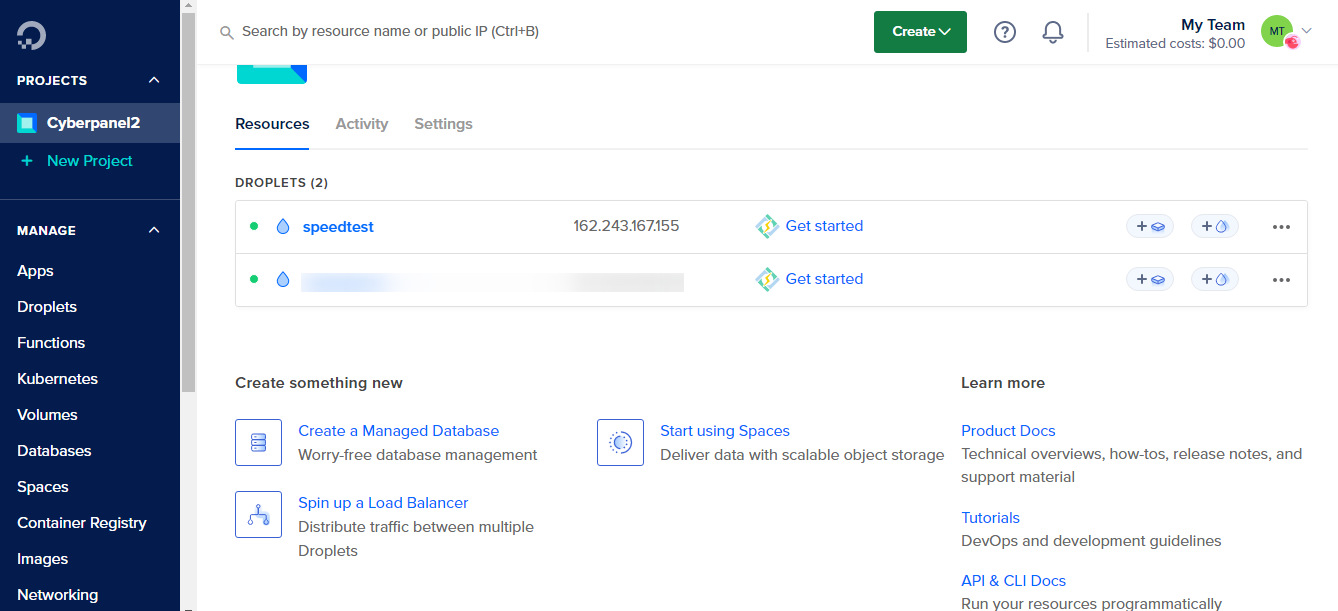
Another major difference is that you can’t install 1-click apps on Digital ocean’s entry-level plan, you have to opt for a $6 plan. At Kamatera’s $4 plan, you can install popular apps with various OS with a click.
Winner – With enormous resources and flexibility, Kamatera thrives.
Round 7: Daily Backup
Kamatera allows daily backup for $3. The price gradually goes up while you will upgrade your plan. You can take 4 snapshots per server at $0.05/GB/month and clone your server.
At Digital Ocean, daily backup is not available, but weekly backup with 4 weeks retention at the charge of 20% of the droplet price.
Winner – Daily backup is safer than weekly backup. Kamatera takes a big plus point.
Round 8 : Managed Service
DO has no plan for managed service, but Kamatera has it for $50. That’s huge.
Anyone can hire their professional support team to manage servers to unlock top performance, consistent reliability and save huge caretaking time.
Especially professional website owners should opt for it to utilize their whole energy and time on main business rather than for technical server managment. Honestly, the investment is going to give you more ROI in the coming days.
Winner – Undoubtedly, Kamatera is far ahead here.
Round 9 : Security
Many clients confronted DDoS attacks when they started to grow. Don’t worry, both of them offer DDoS protection.
Moreover Kamatera’s cloud firewall provide protection from DDoS, brute force, spyware, trojans, and SQL injection, along with various port protection.
Winner – The safety title finished at tie.
Round 10: Server Location
DO has 13 data centres which are located in New York City (3), Amsterdam, San Francisco (2), Singapore, London, Frankfurt, Toronto, Banglore, Sydney and Atlanta.
Kamatera operates 24 data centres which literally cover the whole globe. These are Chicago, Santa Clara, New York, Miami, Dallas, Toronto, Amsterdam, London, Hong Kong, Frankfurt, Milan, Stockholm, Madrid, Petak Tikva, Tel Aviv, Rosh Haayin, Rosh Haayin 2, and Haifa.
Winner – More data centres mean more coverage and faster latency. Kamatera blazes.
Round 11: Support
Digital Ocean has prepackaged answer emails to your queries in the name of customer support. The pre-templated answer just gives an overview and will not solve your issues. You have to hire a freelance server expert from freelancer site to fix any server issues.
However, in the Digital Ocean community, you can find many tutorials and solved questions that can help you.
Kamatera provides flexible support over live chat, phone calls and email. You can also seek assistance from their extensive knowledge base. Their expert replies are concise and precise.
Winner – From a beginner’s perspective, customer support is inevitable, and Kamatera delivers it reliably.
Round 12: Pricing
Both are friendly with pocket. Their entry-level plans start at the cost of $4. But Kamatera’s entry-level has higher resources.
Specially 1 GB RAM and 5TB bandwidth, whereas DO provides 512 RAM and 1 TB data transfer.
Kamatera’s biggest plan is available at $1098/month. The mighty plan consists of 32 core CPU, 128GB RAM, 4TB SSD and 5TB transfer.
At DO, the $96/m plan is the biggest one and that includes 16 GB RAM, 8 core CPU, 320 GB SSD and 6 TB transfer.
Winner – With the pricing affordability and more resources, Kamatera wins and waives the charge while instance gets off but DO charges.
Conclusion
You can go for both if you are an expert at cloud hosting. Both are big brand names in the internet market.
But if you’re naive and want more resources, safety, performance, uptime and quick support on budget-friendly pricing. We recommend Kamatera.
While both Digital Ocean and Kamatera provide free trials, you can take a test drive on both cloud platforms, before doing any serious deployment.
FAQ
1. Which VPS is faster in real-world performance, Kamatera or DigitalOcean?
Kamatera is significantly faster. In our tests, it delivered a 22 ms TTFB from New York, while DigitalOcean took 131 ms. Kamatera also loaded pages almost twice as fast in GTmetrix and PageSpeed Insight. If speed is a priority for SEO, user experience, or eCommerce, Kamatera clearly outperforms DigitalOcean.
2. Which platform has better uptime and stability?
Kamatera maintained a perfect 100 percent uptime during a full 30 day test. DigitalOcean went down twice and accumulated 12 minutes of downtime, resulting in 99.945 percent uptime. When you need mission-critical reliability for SaaS, stores, or business websites, Kamatera remains rock solid.
3. Who handled high traffic and stress testing better?
Kamatera dominated this round by a huge margin. It handled more than 328,000 successful requests with zero errors. DigitalOcean managed only 20 successful requests before failing, crashing under just 2,273 users per second and staying down for eight minutes. For busy websites and peak traffic events, Kamatera is the safer choice.
4. Which one offers better resources at the same price?
Kamatera gives you more power for the same starting price of four dollars. You get a faster 2.7 GHz Xeon CPU, 1 GB RAM, 20 GB SSD, and 5 TB bandwidth. DigitalOcean provides half the RAM, a slower CPU, and only 1 TB transfer. You also cannot install one-click apps on DO’s four dollar plan, while Kamatera allows it.
5. Who provides better customer support?
DigitalOcean relies entirely on ticket support, and most replies are template messages. Kamatera offers real human support on live chat, phone, and email. Their responses are quick, clear, and helpful—making troubleshooting easier for beginners and non-technical users.
6. Which is the better choice overall for beginners and professionals?
Kamatera wins in speed, uptime, resources, security, data centers, stress handling, and customer support. DigitalOcean is great for developers who want a simple dashboard, but Kamatera offers more value, more performance, and more peace of mind. Since both provide free trials, you can test them yourself—but Kamatera remains the superior option for most users.
More:
- 100% Off Kamatera Coupon +Free $100 Promo Code
- How To Claim Kamatera Free Trial? [Free $100 Credit 30 Days]
- How To Install WordPress on Kamatera in 1 Min
Meet Ravi Kumar, our web hosting and WordPress speed optimization guru with over 4 years of experience. He’s optimized 150+ websites, uncovering common VPS performance issues. Armed with insights, Ravi ensures smooth VPS experiences for all.
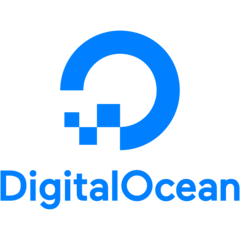
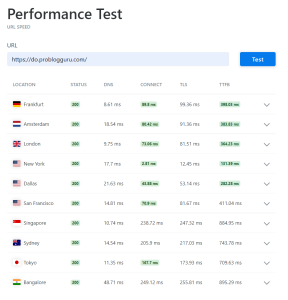
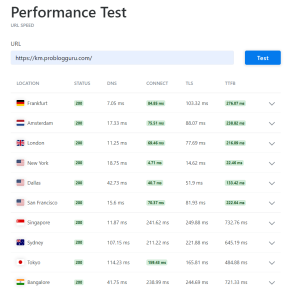
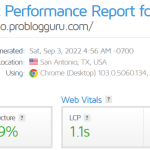
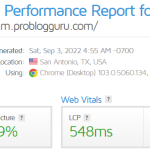
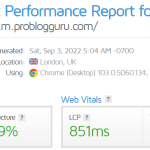
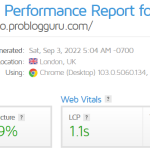
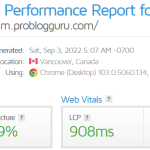
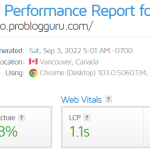
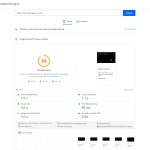
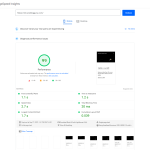

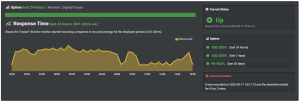
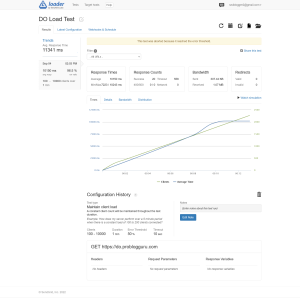

Just read through the Server Location section, and I gotta say, it’s made my decision a lot easier. Location is key for my local business and seeing how Digital Ocean and Kamatera compare has been really helpful. Big thanks to Ravi Kumar for breaking it down so well. This was the push I needed!
Interesting comparison between Kamatera and Digital Ocean. I think what’s most fascinating is the emphasis on Security. Makes you wonder how these companies really stack up against each other in a real-world scenario. Security’s a big deal, so it’s something to seriously consider.
i’m not convinced that speed should be the end-all factor when choosing a cloud provider. there’s more to it, like server location and the quality of support. this article by ravi gives a lot of food for thought but i think we’re missing the bigger picture sometimes. doesn’t anyone else think that stability outweighs speed in some cases?
Ravi Kumar’s round-by-round breakdown is a gem for anyone stuck in decision paralysis like I was. The clarity on Daily Backup services is what really made the difference for me. It’s rare to see such a direct comparison that doesn’t shy away from pointing out the shortcomings on both sides. Kudos to Ravi for the insights!
I must admit, while Ravi Kumar lays out an exhaustive comparison, I find myself questioning the thoroughness of the testing methodology. The section on VPS Resources, for example, leaves much to be desired. Both providers have nuanced offerings that don’t seem fully explored. Have others also found this, or have I overlooked some details?
does anyone know if the managed service is worth the price? trying to figure out if i should go with that or just handle things myself, any advice would be cool
Hey everyone, just finished going through the Kamatera vs Digital Ocean breakdown by Ravi Kumar, and I gotta say, it’s pretty detailed. I’ve been bouncing between these two for a while for my startup. The speed test was what caught my eye. Didn’t expect that gap. Anyone else here surprised by the results or is it just me? Thinking of switching based on that uptime data alone. Thoughts?
Hey Terry, was the uptime difference really that significant? Wondering if it’s worth the hassle to switch.
got to admit, that part caught me off guard too. might lean towards digital ocean now.